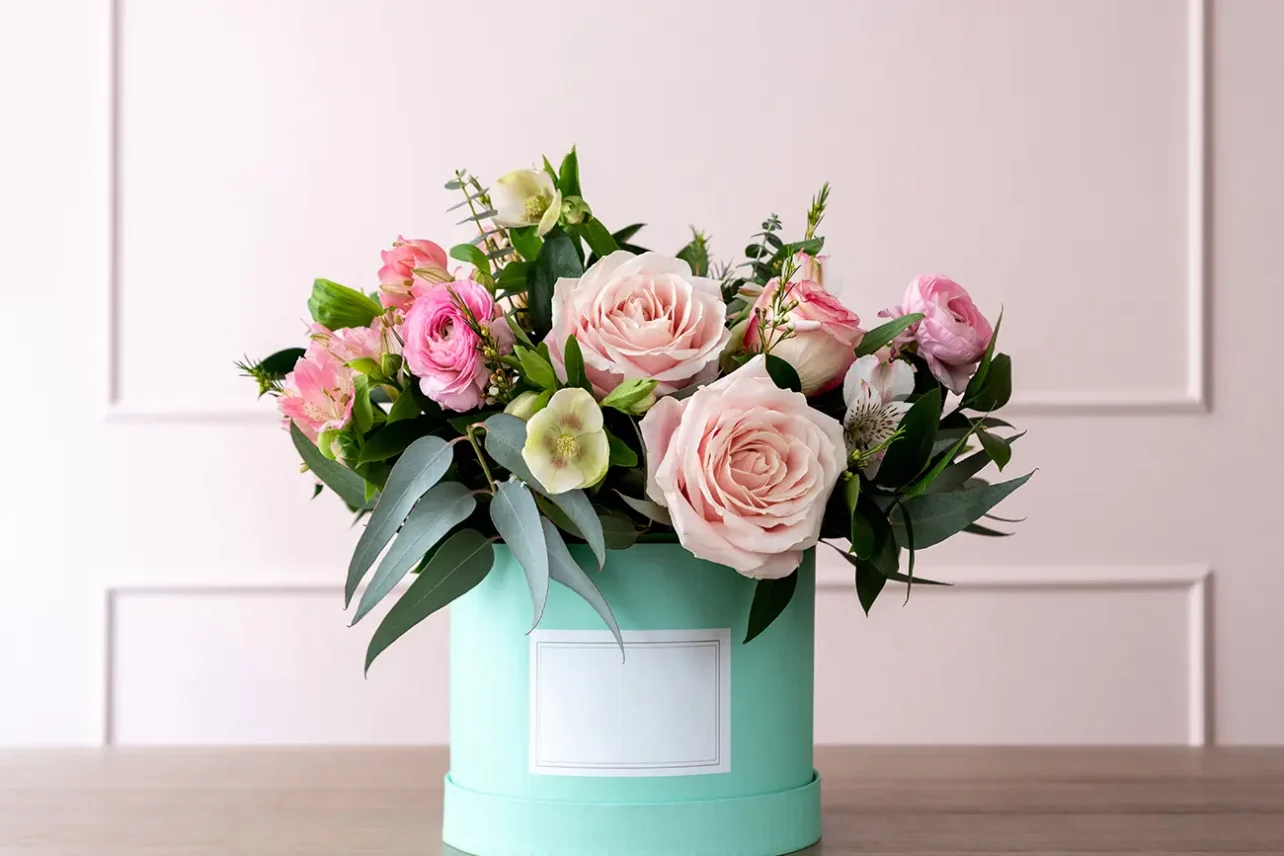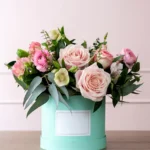The Symbolism of Flowers
The world of flowers is simply captivating, isn’t it? Each delicate petal seems to whisper stories of days gone by, and every subtle fragrance seems to hold a memory that’s both sweet and ephemeral.
I’ve always found that for myself and many flower enthusiasts I’ve chatted with, there’s something incredibly special hidden within each bloom. But have you ever paused to consider that every flower also symbolizes something wonderfully unique, sharing narratives and emotions that have been celebrated through time?
As we step into the garden of symbolism, we’ll explore the meanings each bloom shares with us. From the romantic narratives encapsulated in a bouquet of roses to the respectful farewells conveyed by chrysanthemums, the graceful allure of each flower is truly enchanting.
So, let’s discover the silent yet vibrantly expressive language of flowers and allow their stories to unfold within our hearts, finding reflections of our own narratives amidst their fragrant folds, and perhaps, uncovering new insights within the blooms we’ve admired time and time again.
Historical Context of Flower Symbolism
Diving into the history of flower symbolism is like stepping back in time. It’s a journey that takes us through various cultures and civilizations, each offering a unique perspective on the meanings and uses of flowers.
In ancient Egypt, for instance, the lotus was highly revered and often associated with rebirth and the sun. The Egyptians admired its ability to bloom in the mud and rise above the surface to greet the sun, symbolizing purity and resurrection.
Papyrus, on the other hand, was not just a practical plant used for making paper but also held symbolic meanings related to growth and prosperity.
Moving towards ancient Rome, we find that flowers like roses and violets were integral to their mythology and daily practices. Roses, often linked to secrecy due to their use in confidential meetings, were also a symbol of love and beauty, reflecting the qualities of the goddess Venus.
Violets, associated with modesty and faithful love, found their place in various myths and were used in festivals and celebrations.
In the richness of Chinese culture, flowers like peonies and chrysanthemums were celebrated for their beauty and symbolism. Peonies, representing wealth, honor, and nobility, were admired and cherished, especially during the Tang Dynasty. Chrysanthemums, symbolizing longevity and vitality, were often used in traditional Chinese medicine and art.
The Victorian era brought about a unique practice known as floriography, where flowers became a medium to express emotions and messages that the strict societal norms often did not allow to be spoken. A red rose conveyed love, while a yellow one spoke of friendship, creating a nuanced and secret language that was both beautiful and covert.
Isn’t it fascinating how each era and culture found its own meanings and stories in the world of flowers?
These historical snippets provide a glimpse into the rich and varied tapestry of flower symbolism that has been woven through the ages, influencing the way we view and interact with these delicate blooms today.
As we continue our journey, we’ll continue to explore the deeper symbolism of specific flowers, exploring the tales and meanings they’ve carried through time and cultures. It’s a path that’s as fragrant and rich as the flowers themselves, offering insights and stories that have been cherished and shared through generations.
Symbolism of Specific Flowers
Exploring specific flowers and their symbolism is like opening a book filled with stories from different times and places. Each flower, with its unique color, shape, and fragrance, brings along a suitcase of meanings and emotions that have been associated with it over the centuries.
Take roses, for instance. Universally admired for their classic beauty, they’ve been a symbol of love and romance for as long as we can remember. But did you know that different colored roses convey different messages?
Red roses speak the language of love and respect, while yellow roses have been traditionally associated with friendship and joy.
Then we have lilies, often gracing occasions with their elegant presence. Lilies, especially white ones, symbolize purity and virtue. In various cultures, they’re seen as a bridge between the earthly and divine, often associated with motherhood and the cycle of life and death. It’s a flower that has quietly witnessed our joys and sorrows, providing comfort and beauty in moments that often transcend words.
And who could forget the cheerful sunflowers? Standing tall and turning towards the sun, they’ve become symbols of adoration, loyalty, and longevity.
In many ways, sunflowers remind us to seek light and positivity, even amidst challenges, embodying a spirit of resilient optimism that’s both uplifting and inspiring.
As we continue to explore the deeper symbolism of specific flowers, we’ll uncover more stories and meanings, each bloom offering a unique narrative that has been celebrated, mourned, and cherished through various phases of human history.
From the silent strength of the tulip to the gentle farewell of the chrysanthemum, each flower invites us to explore its history and symbolism, enriching our understanding and appreciation of these botanical wonders.
For a quick reference, here’s a list of some popular flowers and their associated meanings:
- Roses: Love and romance
- Tulips: Perfect love and passion
- Lilies: Purity and motherhood
- Sunflowers: Adoration and loyalty
- Daisies: Innocence and new beginnings
- Orchids: Luxury and strength
- Violets: Modesty and faithfulness
- Peonies: Prosperity and honor
- Chrysanthemums: Longevity and vitality
- Lavender: Devotion and serenity
- Daffodils: Rebirth and new beginnings
- Marigolds: Creativity and passion
- Iris: Hope and wisdom
- Magnolias: Dignity and nobility
- Poppies: Remembrance and consolation
- Hydrangeas: Gratitude and understanding
- Carnations: Admiration and pure love
- Gardenias: Purity and sweetness
- Azaleas: Taking care of oneself and abundance
- Zinnias: Endurance and thoughts of friends
Flower Symbolism in Different Cultures
Each culture, with its unique traditions and narratives, has embraced flowers, attributing to them meanings that reflect their values and beliefs.
In Japan, the practice of Hanakotoba, or the language of flowers, has been deeply intertwined with the nation’s art, literature, and daily life. Flowers like cherry blossoms, symbolizing the transient nature of life, and chrysanthemums, representing longevity and rejuvenation, have permeated various aspects of Japanese culture, from celebrations to contemplative practices.
Native American cultures, with their profound connection to nature, have also held flowers in high regard. For instance, the sunflower, symbolizing warmth, provision, and nourishment, reflects the sun’s life-giving energy in many Native American tales. Similarly, various tribes have utilized flowers not only as food and medicine but also as symbols in rituals and ceremonies, each flower bearing meanings connected to life, death, and the spirit world.
In the Middle East, flowers like roses have been celebrated in literature and art for centuries. In Persian culture, the rose often symbolizes love, beauty, and the heart, finding its way into poetry and visual arts, expressing emotions that range from passionate love to spiritual longing. Similarly, flowers like jasmine and hyacinth have found their place in tales, poems, and myths, each carrying a bouquet of meanings and emotions.
As we journey through different cultures and their floral symbolisms, we find that while the flowers may remain the same, their meanings often transform, shaped by the beliefs, values, and experiences of each civilization. From the romantic tales of the East to the spiritual narratives of the West, flowers have been steadfast companions to humans, silently bearing witness to our collective and individual journeys.
Flower Symbolism in Modern Times
Navigating through the modern era, the symbolism of flowers continues to weave its way through our celebrations, milestones, and everyday life, albeit with contemporary nuances that reflect our current experiences and values.
In today’s weddings, flowers are more than mere decorations. The choice of blooms often tells a story of love, commitment, and shared dreams. White roses, symbolizing purity and new beginnings, often grace bridal bouquets, while sunflowers, representing adoration and loyalty, might adorn rustic wedding settings, each flower silently speaking of the promises and hopes of new unions.
Flowers also stand beside us in times of farewell. At funerals and memorials, lilies often express our shared sorrow and offer comfort with their serene beauty, symbolizing the restored innocence of the soul. Similarly, forget-me-nots, with their delicate blue petals, whisper messages of remembrance and deep love for those who have departed.
In the realm of social and political movements, flowers have not been mere bystanders. The poppy, with its vibrant red petals, has become a symbol of remembrance and honor for fallen soldiers, transcending borders and becoming a global emblem of respect and acknowledgment for sacrifices made during wartime.
Moreover, flowers continue to inspire us in arts and media, becoming metaphors, symbols, and focal points in literature, films, and visual arts. Roses often become symbols of love and mystery in novels, while cinematic moments are immortalized with fields of tulips or intimate exchanges of carefully chosen bouquets, each scene silently enriched by the unspoken meanings of the blooms present.
In the hustle and bustle of modern life, flowers remain our silent companions, speaking a language that often transcends words, connecting our past with the present, and adding depth and color to our experiences and expressions. As we move forward, the symbolism of flowers will likely continue to evolve, reflecting our stories, values, and the ever-changing story of the human experience.
Conclusion
Exploring the world of flowers and their symbolism has been a journey through time, cultures, and emotions, revealing how these delicate blooms have silently intertwined with our stories, celebrations, and moments of reflection. From the ancient tales whispered by the petals of the lotus to the modern narratives encapsulated in a bridal bouquet, flowers have, and continue to be, expressive companions in our shared and individual journeys.
In every petal, we find reflections of love, sorrow, celebration, and farewell, embodying emotions and meanings that often traverse beyond the boundaries of words. Flowers have witnessed our history, been part of our personal and collective moments, and silently expressed our unspoken words, becoming symbols that connect our hearts and experiences across time and space.
As we step forward, the meanings and symbolisms of flowers will undoubtedly continue to blossom in new and profound ways, reflecting our evolving stories, beliefs, and expressions. The silent language of flowers, rich, vibrant, and ever-changing, will persist in adding depth, color, and emotion to our lives, silently echoing our tales and sentiments in their subtle and gentle ways.
In the fragrant folds of each bloom, may we continue to find joy, solace, and expression, allowing flowers to speak our silent words, celebrate our moments, and traverse with us through the myriad experiences of life.


